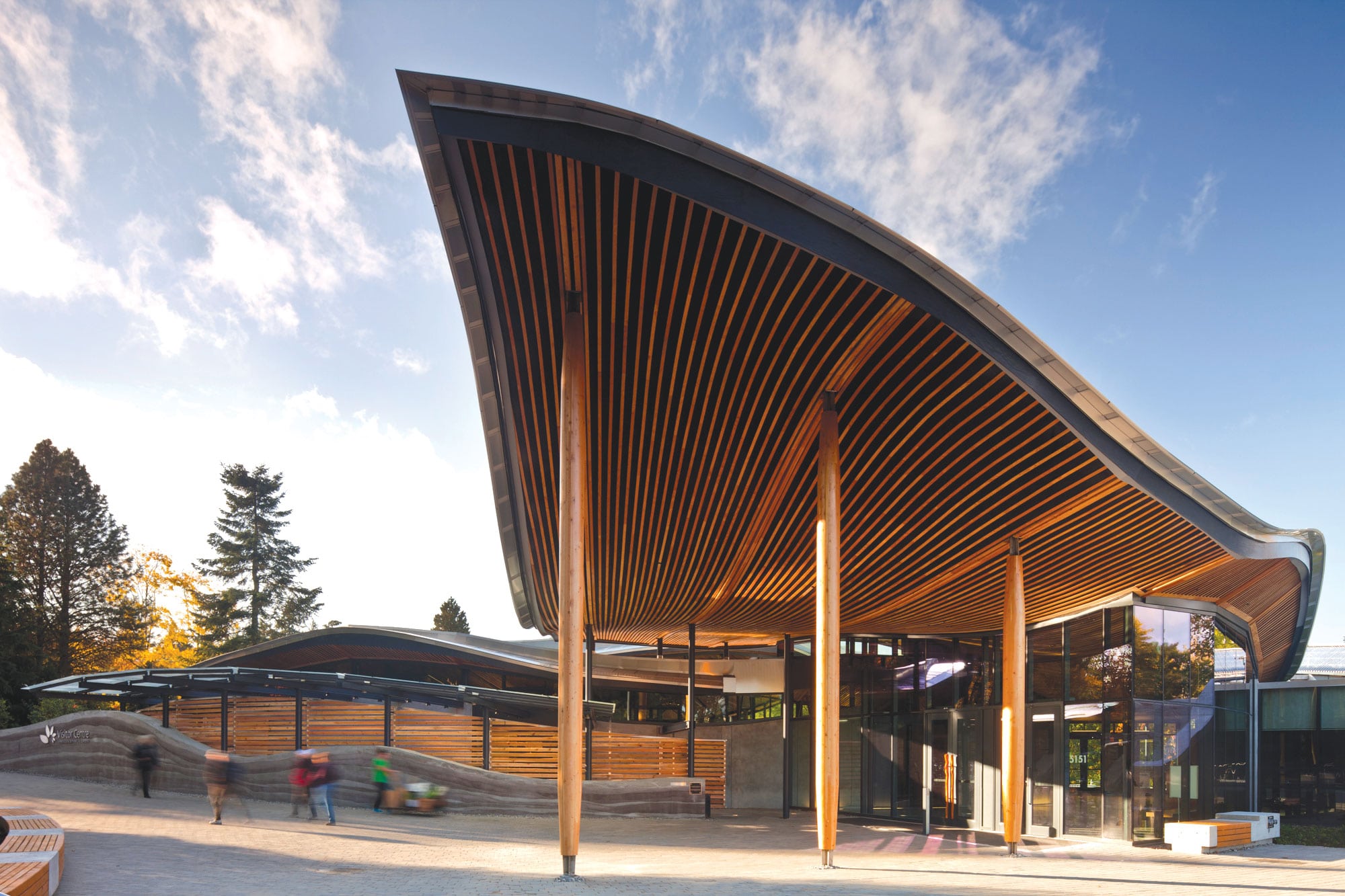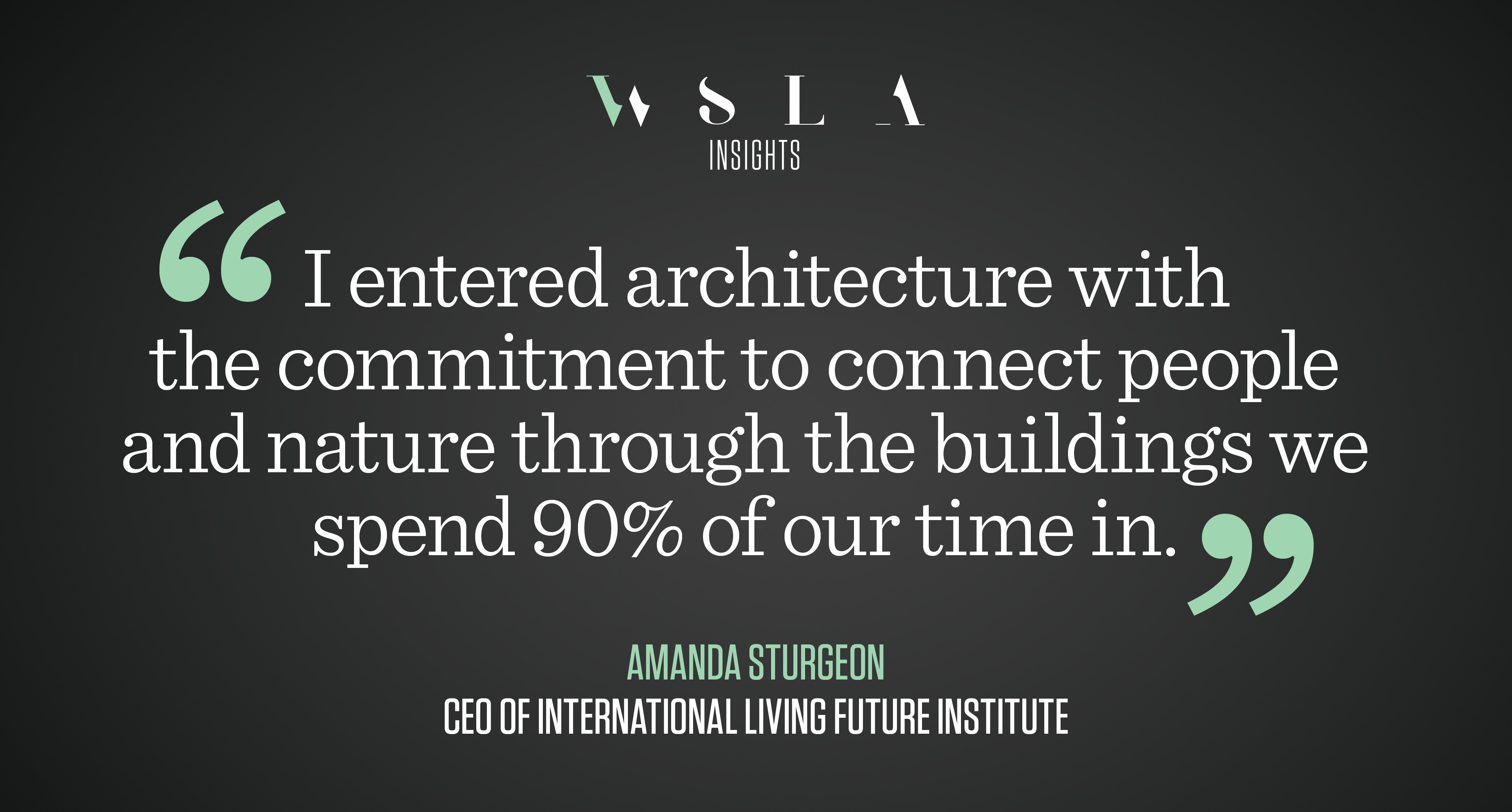
WSLA Insights is a special section in each issue of gb&d magazine where alums from the Women in Sustainability Leadership Award share their guidance and leadership experience.
Transform spaces and regenerate life

VanDusen Botanical Gardens [Photo: Courtesy of VanDusen]
I became an architect because of biophilic design. I developed a deep love of life while backpacking around Australia in my early 20s. The sheer beauty of the country, its unique flora and fauna, and the vast quantities of wild land that had not been changed beyond their natural ecological state was life changing—it was a stark contrast to the landscapes of England where I grew up.
I entered architecture with the commitment to connect people and nature through the buildings we spend 90% of our time in. We’ve all experienced buildings where the movement of the sun through the sky creates shadows and pools of light that connect us to the time of day, season, and our sense of inner rhythm. Realtors know buyers will pay more to have a view, and we eagerly make early reservations at a favorite restaurant to get a table by windows rather than sit in the middle of the room. As building occupants, we’re drawn to spaces that interact with nature. But often we’re left with spaces that don’t give us that choice, ones with no windows, no fresh air or views of anything other than a wall or parking lot.
The conscious discipline of biophilic design has emerged to intentionally reconnect us with nature through buildings and is core to the framework of our organization’s Living Building Challenge. Some project teams add plants and trees or a fountain in their buildings as a nod to nature, but that misses the power of this discipline to revolutionize the way we create and design our places.

Biophilic design has been practiced for thousands of years, but since the industrial age we’ve used our buildings as an expression of our domination of nature and our separation from it. Once electricity was widespread, naturally ventilated and lit buildings became a thing of the past. Energy seemed plentiful and so it was wasted, people relied on automated air and became passive observers—no longer manually opening windows or pulling down shutters. The air conditioner kept us cool no matter what it felt like outside. Now that the effects of global climate change require urgent solutions, buildings and their more than 40% share of energy consumed are an essential influencer.
With biophilic design, we have an opportunity to connect to a particular ecology of a place—to its culture, history, and beauty—and to create a building that will bring life to the relationship between people and nature. For broad adoption of biophilic design to happen we need to shift our current systems-based design approach. We must change the way we train architects and designers so they can think and act systematically and develop the tools to communicate with building owners and developers. With today’s increased focus on the health and wellness of buildings, now is the time to achieve biophilic design.
Read more from past WSLA alums here.

Amanda Sturgeon, FAIA, is CEO of the International Living Future Institute and was named one of the 10 most powerful women in sustainability in 2015 as a recipient of the Women in Sustainability Leadership Award (WSLA). She joined the institute in 2010 following a career as a licensed architect with 15 years experience designing and managing some of the most sustainable buildings in the Pacific Northwest.

